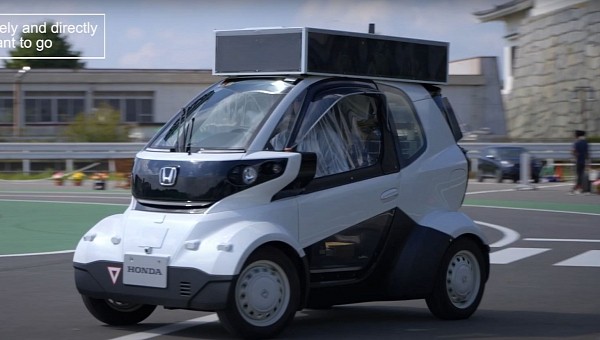Honda is known for its ventures into the automobile and motorcycle world, but the brand is also a key player in other areas like general-purpose power products, outboard engines, making jet aircraft and jet engines. But now things are going even further for the company. It wants to turn the relationship between humans and artificial intelligence (AI) into a seamless experience.
Automakers understood they cannot remain focused on only making vehicles or machines that move with the help of fossil fuels, batteries, or fuel cells. Selling all kinds of machines that just support mobility is simply not enough in today’s world. For progress to happen, there is a need to redefine the car whilst keeping its main scope unchanged. That’s why, like Tesla and many others are doing at the moment, Honda decided to push on with transforming how it operates in an ever-changing world. But instead of choosing to follow the subscription-based route for unfinished software or creature comforts, the Japanese automaker decided to do something else entirely – Cooperative Intelligence.
Honda’s Research and Development arm revealed new and very complicated software. This development allows, according to the company, to turn communication between humans and machines into an almost natural interaction. The well-known automaker says the health crisis, collapsing birthrates, and population aging are some of the most important factors that invested micro-mobility, self-driving, and communication with machines necessary.
Honda’s newest technology allows small trikes and quads to navigate areas without relying on high-precision maps. These units recognize their surroundings with the help of cameras and sensors. That’s how they make sure the human will reach their destination. The company says these small machines that will keep most of the aging population moving or will help with the transport of certain goods on small and medium distances will also be able to perform gestures and/or speak in a human-like fashion.
The promising technologies are to be used in micro-mobility vehicles called CiKoMa, while WaPOCHI will serve as the multipurpose robot that helps humans with everyday activities by following them around.
CiKoMa uses spatial recognition and real-time road structure understanding, and borrows human driver traits to make sure the driving behavior is not going to be an uncommon experience, while WaPOCHI will be capable of answering questions, debating about general topics, and even entertaining dialogue about various ideas.
The testing of these new technologies and machines will begin at a smaller scale in November and will continue next year in multiple parts of Japan. The testing area will be expanded further down the road in Joso City if everything goes according to plan in these early stages. The company wants to offer the CiKoMa and the WaPOCHI as soon as 2030. In the meantime, other micro-mobility products could be introduced until then.
Honda has not revealed anything about the costs of these intelligent machines.
Honda’s Research and Development arm revealed new and very complicated software. This development allows, according to the company, to turn communication between humans and machines into an almost natural interaction. The well-known automaker says the health crisis, collapsing birthrates, and population aging are some of the most important factors that invested micro-mobility, self-driving, and communication with machines necessary.
Honda’s newest technology allows small trikes and quads to navigate areas without relying on high-precision maps. These units recognize their surroundings with the help of cameras and sensors. That’s how they make sure the human will reach their destination. The company says these small machines that will keep most of the aging population moving or will help with the transport of certain goods on small and medium distances will also be able to perform gestures and/or speak in a human-like fashion.
The promising technologies are to be used in micro-mobility vehicles called CiKoMa, while WaPOCHI will serve as the multipurpose robot that helps humans with everyday activities by following them around.
CiKoMa uses spatial recognition and real-time road structure understanding, and borrows human driver traits to make sure the driving behavior is not going to be an uncommon experience, while WaPOCHI will be capable of answering questions, debating about general topics, and even entertaining dialogue about various ideas.
The testing of these new technologies and machines will begin at a smaller scale in November and will continue next year in multiple parts of Japan. The testing area will be expanded further down the road in Joso City if everything goes according to plan in these early stages. The company wants to offer the CiKoMa and the WaPOCHI as soon as 2030. In the meantime, other micro-mobility products could be introduced until then.
Honda has not revealed anything about the costs of these intelligent machines.








